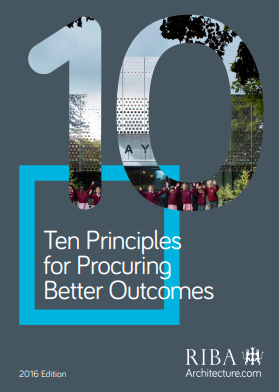Procurement Guidance: Ten Principles for Procuring Better Outcomes. Simple guidance to demonstrate how client organisations can get the best possible outcomes when they procure architectural services.
Resource
Procurement Guidance: Ten Principles for Procuring Better Outcomes. Simple guidance to demonstrate how client organisations can get the best possible outcomes when they procure architectural services.
Provided by: RIBA
 Effective public procurement that prioritises good design outcomes can maximise the social, environmental and economic benefits of development.
Effective public procurement that prioritises good design outcomes can maximise the social, environmental and economic benefits of development.
This document clarifies how client organisations can get the best possible outcomes when they procure architectural services.
Designed to aid Local Authorities in developing robust, evidence-based plans to enable Net Zero.
Already have an account? Login